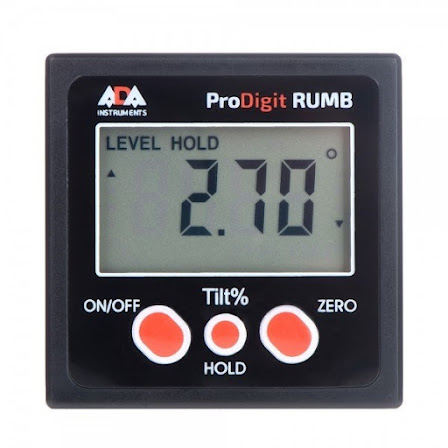When you're adventuring outdoors, there are always risks involved–even if you're just going for a walk in your neighbourhood. One of the best ways to mitigate these risks is to be prepared, and that includes having the right tools on hand. Today, we're going to talk about how to use a digital inclinometer. This handy little device can help you stay safe while exploring the great outdoors!
What is an inclinometer?
An inclinometer is a device used to measure the angle of slope or tilt. In other words, it tells you how "uphill" or "downhill" you are travelling. This information can be helpful when hiking or skiing, as it can help you stay safe in steep terrain. It also have a "level" function, which allows you to ensure that your device is reading accurately.
How does an inclinometer work?
An inclinometer is a handy tool used to measure angles. It is made up of two perpendicular arms and a calibrated scale. When the object to be measured is placed between the two arms, the scale will indicate the angle in degrees.
Most inclinometers also have a built-in protractor function, which can be used to measure other angles in addition to vertical angles. Digital inclinometers are preferred because they are easier to read and give more precise readings than analogue inclinometers.
What are the benefits of using a digital inclinometer?
A digital inclinometer is a great tool in your outdoor gear arsenal. They're can be used for a variety of activities like camping, hiking, biking and climbing. Here are some of the benefits of using a digital inclinometer:
-They're compact and easy to carry around
-They measure slope angles accurately
-They can be set to warn you when you reach a dangerous slope angle
-They have a backlight for easy reading in low light conditions
How to use a digital inclinometer?
A digital inclinometer is a great tool to have in your outdoor arsenal. It's perfect for measuring slope angles, checking the stability of slopes before you hike or climb them, and even for creating maps. Here's how to use one:
-Choose the unit of measurement you want to use (degrees, percent, or metres).
-Line the inclinometer up with the slope you want to measure.
-Make sure the device is level, then read the angle value on the display.
-Record your findings, then repeat as necessary. Remember to use caution when traversing any slope, no matter how slight—better safe than sorry!
Safety tips for using a digital inclinometer
When using a digital inclinometer, be sure to follow these safety tips:
-Always be aware of your surroundings and what is happening around you.
-Be mindful of where the device is pointing and who or what is in the line of fire.
-Never use the device when you are distracted or in a rush.
-Calibrate the device before and after each use.
-Ensure that the sensor is clean and clear of obstructions before taking a measurement.
-Store the device in a safe place when not in use.
Conclusion:
A digital inclinometer is an essential tool for hikers, backpackers, and other outdoor enthusiasts. By using a digital inclinometer, you can ensure that you're always aware of your surroundings and maintain your safety while outdoors.

Comments
Post a Comment